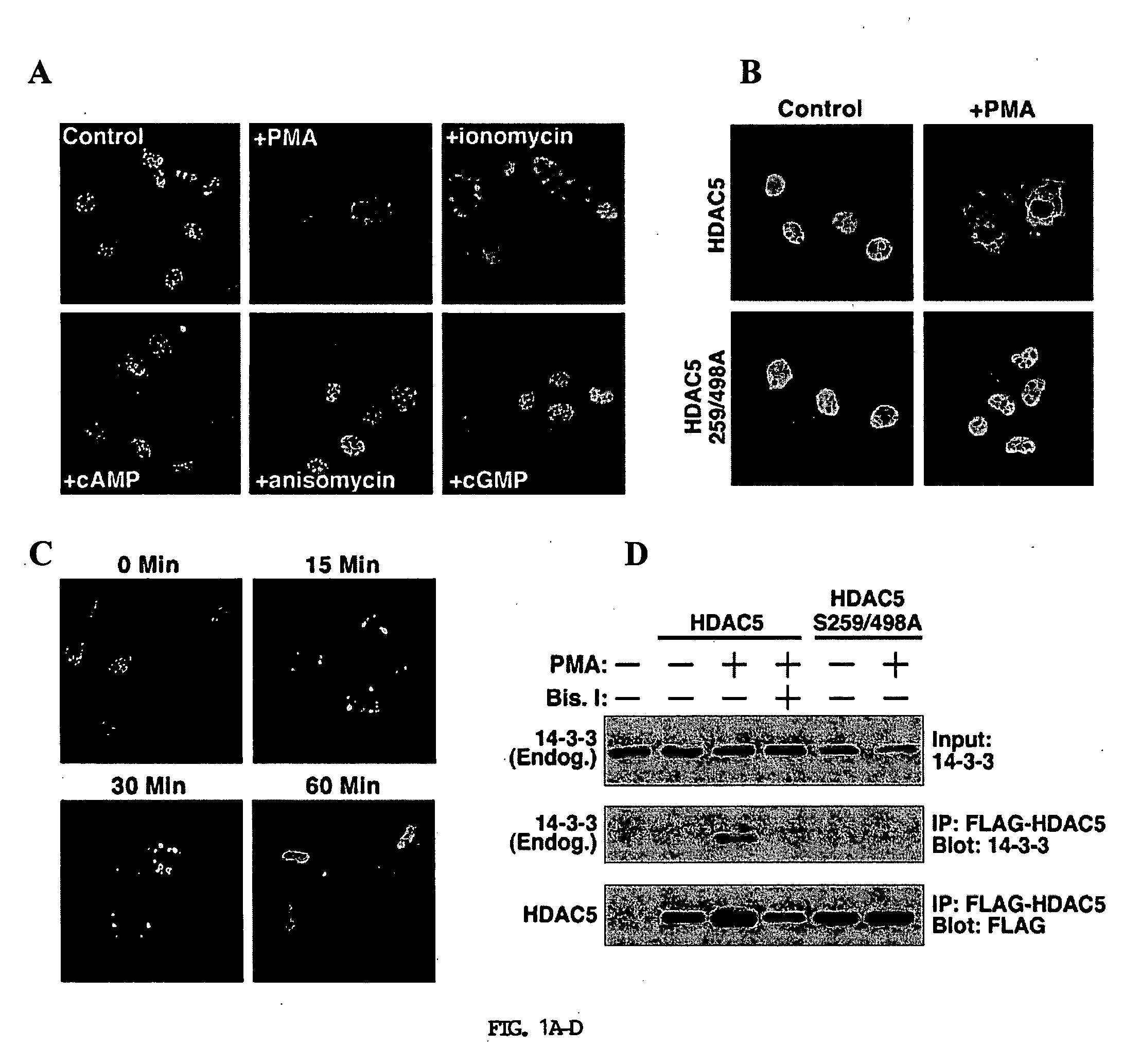Inhibition of protein kinase c-mu (PKD) as a treatment for cardiac hypertrophy and heart failure
a technology of protein kinase and inhibitory protein, which is applied in the field of development biology and molecular biology, can solve the problems of cardiac hypertrophy, which is still not fully understood, and achieve the effects of reducing the activity of pkd in the heart cells, preventing cardiac hypertrophy, and increasing exercise toleran
- Summary
- Abstract
- Description
- Claims
- Application Information
AI Technical Summary
Benefits of technology
Problems solved by technology
Method used
Image
Examples
example 1
Materials and Methods
[0332] Chemical reagents and plasmids. Phorbol 12-myristate 13-acetate (PMA), 8-Br-cAMP, pCPT-cGMP, and anisomycin were obtained from Sigma Chemical (St. Louis, Mo.). The following kinase inhibitors were purchased from the indicated vendors: bisindolylmaleimide I and Gö6976 (A.G. Scientific, San Diego, Calif.), KN93, SB216763 and wortmannin (BIOMOL, Plymouth Meeting, Pa.), Gö6983, staurosporine, PD98059, wortmannin, U1026, Y-27632, Rapamycin and DAG Kinase Inhibitor II (Calbiochem). KN93, wortmannin and staurosporine were used at 1 mM. U1026, HA1077, Y-27632, DAG Kinase inhibitor II, SB216763 and Bis I were used at 10 mM. Rapamycin was employed at 30 ng / ml. Phenylephrine and endothelin-1 were purchased from Sigma. Mammalian expression vectors encoding PKD isoforms were kindly provided by Alex Toker and have been described elsewhere (Storz and Toker, 2003).
[0333] Cell culture and transfection assays. COS cells were maintained in DMEM with FBS (10%), L-glutamine...
example 2
Results
[0341] A PKC-dependent pathway stimulates nuclear export of HDAC5. To further define the signaling pathways leading to phosphorylation and nuclear export of class II HDACs, the inventors tested a variety of activators of protein kinase pathways for their ability to stimulate nuclear export of HDAC5 in COS cells. HDAC5 is primarily located in the nucleus of COS cells allowing for a convenient system to assess nuclear export. Activators of PKA (8-Br-cAMP), PKG (pCPT-GMP), PKC (PMA), CaMK (ionomycin), and Jun-N-terminal kinase (anisomycin) were tested for their ability to activate nuclear export of HDAC5 fused to GFP. Among these compounds, only ionomycin and PMA stimulated nuclear export of GFP-HDAC5 (FIG. 1A). PMA was a more potent stimulator of export than ionomycin at the concentrations tested.
[0342] Nuclear export of HDAC5 and other class II HDACs in response to CaMK signaling requires two serines located in the N-terminal regions of the HDAC proteins (Grozinger and Schre...
PUM
| Property | Measurement | Unit |
|---|---|---|
| Magnetic field | aaaaa | aaaaa |
| Fraction | aaaaa | aaaaa |
| Time | aaaaa | aaaaa |
Abstract
Description
Claims
Application Information
 Login to View More
Login to View More - R&D
- Intellectual Property
- Life Sciences
- Materials
- Tech Scout
- Unparalleled Data Quality
- Higher Quality Content
- 60% Fewer Hallucinations
Browse by: Latest US Patents, China's latest patents, Technical Efficacy Thesaurus, Application Domain, Technology Topic, Popular Technical Reports.
© 2025 PatSnap. All rights reserved.Legal|Privacy policy|Modern Slavery Act Transparency Statement|Sitemap|About US| Contact US: help@patsnap.com



